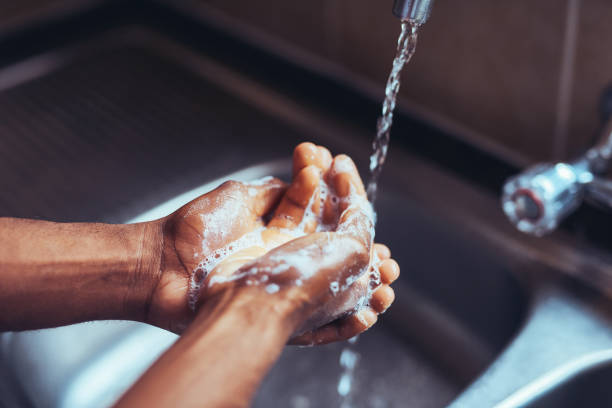An old friend called the other day to ask my opinion on some sick cows on his farm in Central Victoria. Like many producers, Pete had been feeding out a mixture of hay and grain since January to keep the stock going in the dry conditions. When he called he had lost one cow and two further cows were losing condition quickly: severe fowl smelling diarrhoea and generally looked unwell. He was worried about bracken fern poisoning as he had noticed some of the fronds had been chewed and although I couldn’t rule that out, bracken fern poisoning doesn’t usually affect mature cows.
I was more worried about Salmonella which can occur when animals are under stress and the disease spread is increased by feeding out on the ground for an extended period.
I told Pete that I was worried about Salmonella and that he should get his local vet in to work out what was going on. As Pete was bringing the cows into the yards one of them showered him with fowl, putrid smelling faeces. The local vet also suspected Salmonella and took some faecal samples for bacterial culture. He then prescribed antibiotics and oral rehydrating fluids as an interim measure until he could identify what was causing the problem, and its antibiotic susceptibility profile.
A few days later Pete came down with Salmonella.
Salmonella occurs in many animal species, including humans. Some animals can be silent carriers that shed the organism at quite high levels. Around about 1 in 200 beef cattle were shown to be shedding the organism in a survey conducted 10 years ago. Dairy cattle and feedlotted beef cattle are more likely to be shedding than beef cattle or sheep.
In cattle and sheep it is important to feed in a manner that reduces faecal contamination of feed. Using feeders or troughs and minimising overcrowding can reduce the chance of faecal contamination. If it’s necessary to feed out on the ground, try to vary the site within a confined area. Salmonella can stay viable on the ground for months. It’s important to isolate any animals showing signs of disease and consider moving healthy animals to a less contaminated area. Keep in mind that some animals may be shedding without showing any signs of disease and some animals may be incubating the disease.
To keep yourself healthy and disease-free, good personal hygiene is important. Wash your hands before eating or smoking and remember that kids are particularly at risk from such infections. Salmonella is one of a few gut pathogens, along with Campylobacter, Listeria and some E coli., that stock can carry and portray no outward signs of disease. If dealing with a suspect case you may want to use personal protective equipment such as disposable gloves and a face mask.
A cattle vaccine that covers the two most commonly isolated strains of Salmonella is available. The vaccine reduces the clinical signs of the disease; it prevents shedding and carrier states arising. This may be worth considering if Salmonella infections are ongoing.
In people Salmonella is a serious infection.
According to www.healthdirect.gov.au, you should drink a lot of fluids such as water or oral rehydration drinks. Most people recover within about a week and don’t need antibiotics. However, antibiotics may be prescribed for young children or older people. Avoid medicine to prevent vomiting or diarrhoea, unless recommended by your doctor.
Take precautions to avoid infecting others by practicing good hygiene, especially when preparing food.
